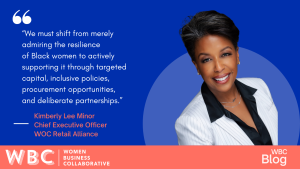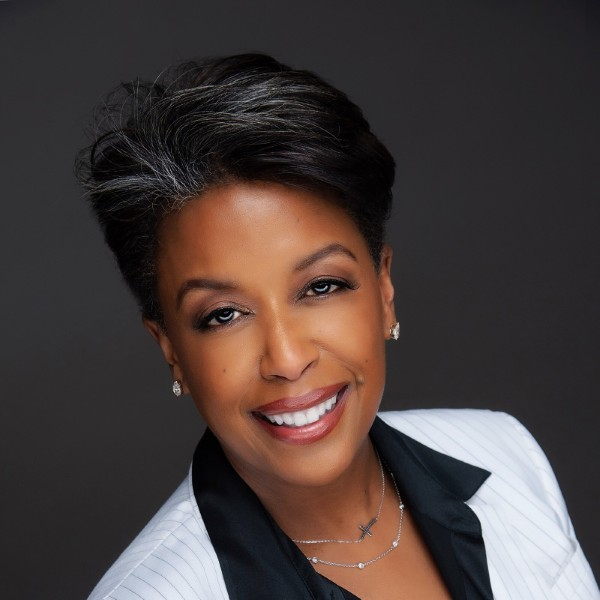
WOCRA on the 2025 Workforce Shift: Black Women Are Leaving Corporate Jobs and Redefining Leadership
August 11, 2025

I was shocked by the June U.S. Bureau of Labor Statistics report that more than 300,000 Black women left the U.S. workforce in the first half of 2025. This rapid decline, one of the fastest and steepest since the onset of COVID in 2020, is a cause for immediate concern. Even the financial crisis of 2008 did not witness such a significant exodus. I needed to know more. Why this and why now? Black women have always been on the bottom end of progress, not at the bottom for ambition, education, and drive, but too often, opportunity.
What was different now?
This year, sweeping federal and state job eliminations gutted many sectors almost overnight. These weren’t minor trims or slow rollbacks; they were broad, sweeping policy decisions, including those driven by a faux agency—Department of Government Efficiency (DOGE). These changes restructured, defunded, or erased entire programs. At the same time, corporate layoffs and the quiet dismantling of diversity initiatives removed the few supports that had begun to aid in equitable treatment for women of color in private industry. The impact was immediate and uneven.
Black women are heavily concentrated in frontline, administrative, and support roles—the ones with the least security and the narrowest paths to advancement. WOCRA’s data shows that while women of color make up 31 percent of the retail workforce, they hold 80 percent of its lowest-paying jobs. When those jobs disappear, the fallout is brutal. And those women who stay are promoted into management at about half the rate of men entering the same track. That gap compounds over time, hardening into wage disparities and locking them out of leadership and decision-making. Pair that with rising childcare costs and stagnant pay, and the math stops making sense: stay and stagnate or step away.
This isn’t just a retail problem—it cuts across industries.
Women are being displaced at growing rates in government, education, and healthcare—three sectors long considered “safe” for women’s careers. Budget cuts in public education have led to mass layoffs of teachers and support staff, disproportionately affecting women of color. Healthcare systems, especially in rural and underfunded regions, are shedding administrative and patient care roles. Even in tech and media, where women were already underrepresented, the erosion of DEI departments and restructuring of corporate teams is pushing women—especially Black women—out. The story is repeating itself: limited mobility, limited support, and limited options.
Some are making a calculated choice to leave. They’re building instead of begging, creating their own ventures rather than trading their talent for burnout. Others are being pushed, forced into unemployment or underemployment as their roles are erased, often without savings or safety nets. Both realities are shaping the 2025 labor landscape, and together they point to the same thing: neither public nor private systems are built to sustain or advance the women who have held them up for decades.
But this isn’t a story of retreat. It’s a compounding catastrophe atop a migration that was already underway. Wells Fargo’s 2025 report shows Black women-owned businesses climbing 7.1 percent year over year. From 2019 to 2023, the number of businesses owned by Black women surged 32.7 percent. More than 2 million Black women-owned enterprises now generate over $118 billion annually. These aren’t side hustles. They’re economic engines reshaping tech, beauty, wellness, professional services, and community-based innovation.
Not every woman is building a company with her name on the door. Many are stepping into the gig economy, consultancy, and freelance work that offers autonomy and flexibility. Some are reskilling into high-growth fields like digital services and healthcare innovation. Others are moving into nonprofits and community-based leadership, where impact outweighs politics and sometimes pay. And yes, some are stepping back entirely, forced into unpaid work by job loss and the skyrocketing costs of childcare and eldercare. Even that isn’t surrender. It’s repositioning.
If business leaders and lawmakers are paying attention, it’s not just talent walking out the door—it’s innovation, institutional knowledge, and competitive advantage leaving with them. Black women are creating the structures they need: new business ecosystems, networks that foster collective influence, and professional communities that replace isolation with shared power. But here’s the truth: entrepreneurship born of necessity cannot carry the full weight of systemic inequity.
We need action. We need investment.
The era of performative gestures has ended. We must shift from merely admiring the resilience of Black women to actively supporting it through targeted capital, inclusive policies, procurement opportunities, and deliberate partnerships.
That’s why the Women of Color Retail Alliance (WOCRA) and the Women Business Collaborative (WBC) are aligning to drive change. WOCRA is focused on closing leadership, pay, and access gaps for women of color in retail and related industries through mentorship, community, advocacy, and career advancement programs. WBC brings together a vast network of business leaders and organizations working to achieve equal positioning, pay, and power for all women in business. Through this partnership, WOCRA and WBC are leveraging shared insights, aligned efforts, and strategic collaboration to ensure that women—especially those historically left out of economic growth—are equipped to lead in the future of work.
And for those ready to be part of what comes next, WOCRA’s B.I.G. Summit on September 25 in New York City is where the work is being done. It’s where women entrepreneurs, corporate leaders, and allies will gather to share resources, build coalitions, and design the next chapter of economic power. If you care about the future of business, you need to be in that room.
Let’s stop talking about potential. Let’s fund it. Let’s amplify it. Let’s build with it.
Author
-

Kimberly Lee Minor is a highly accomplished executive and advisor with over 30 years of dynamic leadership experience spanning retail, brand management, and e-commerce. Her expertise has driven success across diverse brands, ranging from $40 million to $4 billion in revenue. In addition to recently being appointed CEO of WOC Retail Alliance and serving as a faculty member at The Fisher School of Business, Ohio State University, she also contributes as a board director of BlueConic, an award-winning martech company. Passionate about empowering women, she often speaks on topics such as leadership, economic empowerment, and professional development, including a recent TEDx talk. Her contributions have been recognized industry-wide, earning distinctions like being named one of Rethink Retail’s Top Retail Experts for 2024 and inclusion in WWD’s esteemed list of 50 Women of Power. Beyond her professional endeavors, she actively engages in civic initiatives, serving on boards such as Dress for Success, NA Community Foundation, the CAPA Board of Directors, and the Columbus Fashion Alliance. Kimberly and her husband, Marc B. Minor, Esq. have 2 sons and a dog named Blu.
View all posts

